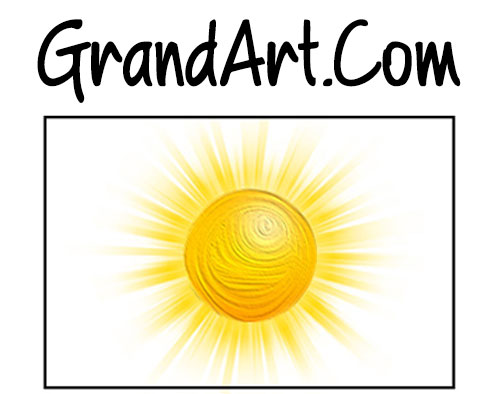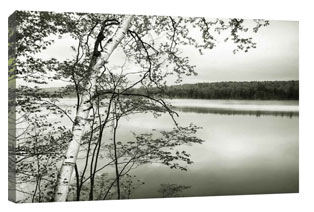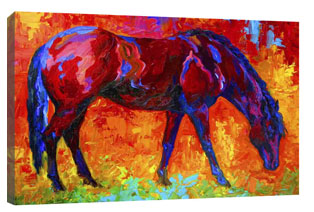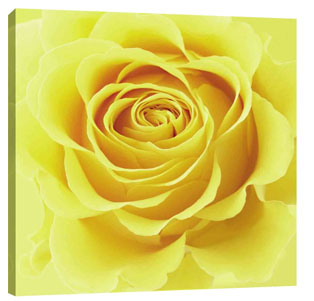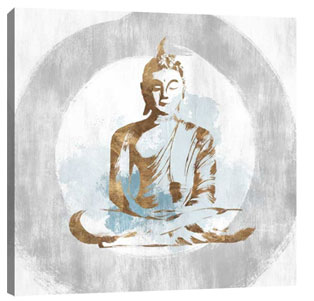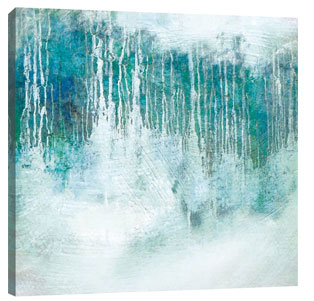The Psychology of Color in Art: How Colors Influence Emotions
Posted by GrandArt on Apr 5th 2024
Welcome to our latest blog post, where we delve into the fascinating world of "The Psychology of Color in Art: How Colors Influence Emotions." Color is much more than just a visual element – it's a powerful tool that can evoke a wide range of emotions and sensations. From soothing blues to vibrant reds, each color has its own unique psychological impact, influencing the way we perceive and experience art. Join us as we explore the psychological effects of color and how you can use this knowledge.
Red: Passion and Energy:
Red is often associated with passion, energy, and excitement. It's a bold and vibrant color that commands attention and evokes a sense of urgency. In art, red can be used to convey powerful emotions such as love, desire, and determination. Whether it's a fiery abstract painting or a striking portrait, the use of red can add intensity and drama to any artwork, capturing the viewer's attention and stirring their emotions.
Blue: Calm and Serenity:
On the opposite end of the spectrum, blue is often associated with calmness, serenity, and tranquility. It's a soothing color that can evoke feelings of peace, relaxation, and introspection. In art, blue is often used to depict landscapes, seascapes, and serene environments, creating a sense of harmony and balance. Whether it's a tranquil seascape or a dreamy abstract composition, the use of blue can imbue artwork with a sense of calm and tranquility, inviting viewers to pause and reflect.
Yellow: Happiness and Optimism:
Yellow is the color of sunshine, happiness, and optimism. It's a warm and cheerful color that can lift the spirits and brighten any space. In art, yellow is often used to convey feelings of joy, positivity, and vitality. Whether it's a vibrant floral painting or a whimsical abstract composition, the use of yellow can infuse artwork with a sense of warmth and energy, eliciting smiles and uplifting the mood of viewers.
Green: Growth and Renewal:
Green is the color of nature, growth, and renewal. It's a refreshing and rejuvenating color that can symbolize new beginnings and vitality. In art, green is often used to depict landscapes, foliage, and natural scenes, evoking feelings of harmony and balance. Whether it's a lush forest painting or a peaceful garden scene, the use of green can evoke a sense of connection to the natural world, inspiring feelings of rejuvenation and renewal.
Purple: Royalty and Spirituality:
Purple is often associated with royalty, luxury, and spirituality. It's a rich and regal color that can convey a sense of opulence and mystique. In art, purple is often used to symbolize royalty, power, and wisdom. Whether it's a majestic portrait or a mystical abstract composition, the use of purple can add a sense of grandeur and sophistication to artwork, inviting viewers to explore its depths and uncover its hidden meanings.In conclusion, the psychology of color plays a significant role in how we perceive and experience art. By understanding the psychological effects of color, artists can harness its power to evoke emotions, convey messages, and create captivating artwork that resonates with viewers on a deep and meaningful level. Whether it's using red to convey passion, blue to evoke calmness, yellow to inspire happiness, green to symbolize growth, or purple to evoke royalty, the possibilities are endless. So go ahead, explore the world of color, and let your creativity soar as you create canvas art that speaks to the hearts and souls of your audience. Your perfect masterpiece awaits!
